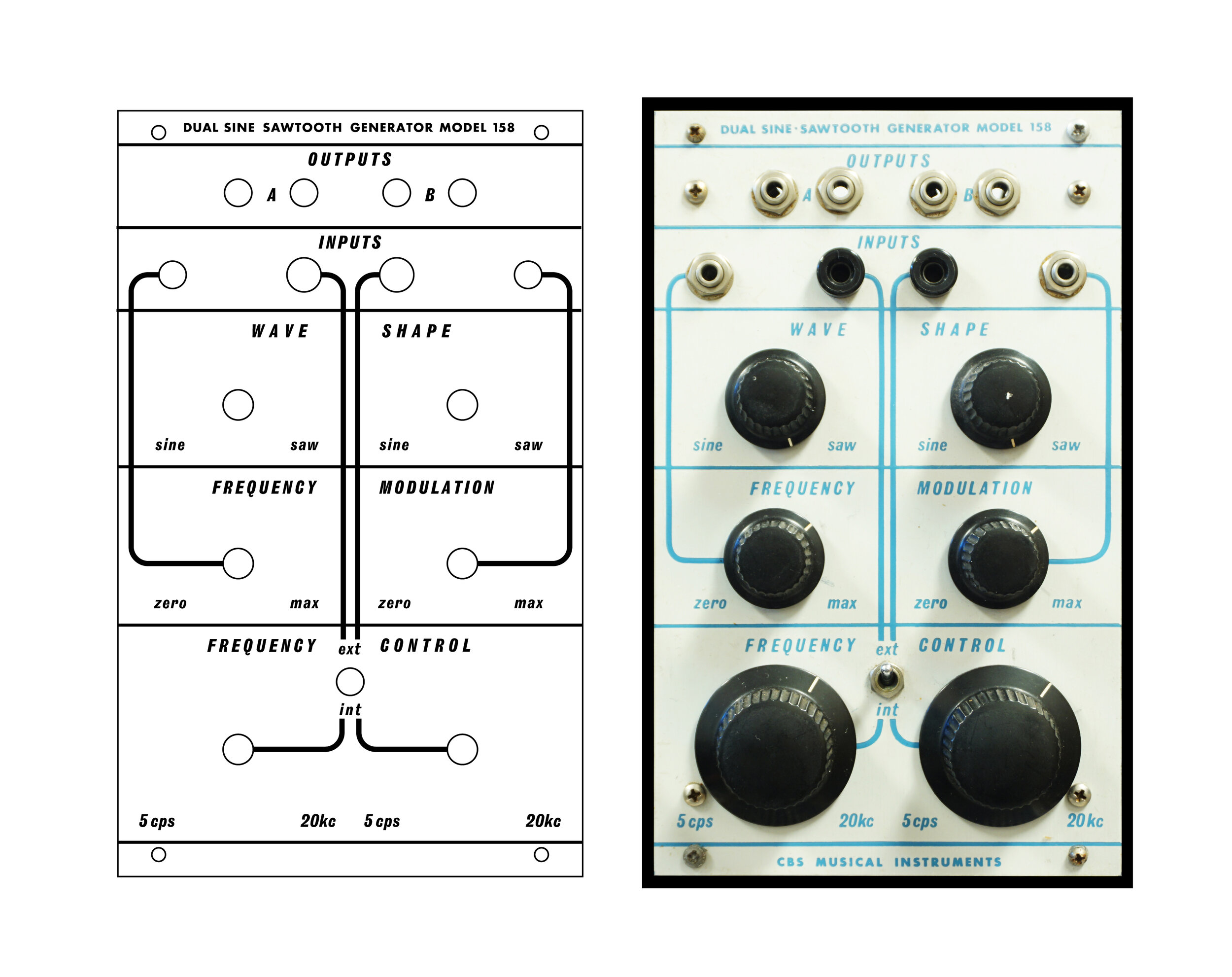100 Series Panel Artwork
158 Panel artwork recreation, by Leo Garza
The panels on any Buchla instrument are the most important aspect of the design, as Don Buchla practiced the idea of designing “from the outside in”.
Keyboard Magazine, December 1982
“An instrument that's well designed won't become obsolete. But the tendency is for engineers to design musical instruments, and needless to say, being engineers, they design from the inside out. They design the circuits, and then they put knobs on them. But if a designer expects to design legitimate instruments, he has to design them from the outside in. He has to build the outside of the instrument first. This is what the musician is going to encounter. You cannot become obsolete if you design a legitimate instrument from the outside in”.
- Don Buchla, Keyboard Magazine, December 1982
For the panel artwork, the project enlisted the help of Leo Garza, a friend and collaborator of Chip Flynn’s. Leo worked many hours to finalize most all of the panel artwork that M.E.M.S. uses as positive transfers for screen printing panels. Combined with Chip’s measurements, Leo had set up the grid, which dictates panel hole location.
We decided to modify the panel artwork colors for two reasons. We have built some modules as gifts to people who sacrificed time and money to help us, be it with photos or paying technicians to disassemble modules. So what happens if they trade or sell these modules down the road? The idea of modules being sold and sold again, with provenance being lost in the fray scared us. So we had to make them look different to avoid any confusion with vintage official modules. The panels are grained and the text is silk screened with epoxy ink, not to be confused with the engraved and infilled panels of CBS yesteryear or the forest green of SFTMC.
The Grid
Panel Layout Grid designed by Leo Garza for CNC hole locations
All of the 1U modules that Don had designed for the 100 Series system follow this grid system. The grid allows for uniform distribution across modules, so each panel is perfectly symmetrical.
While this system is useful for repeat drilling procedures, it introduced other problems that most privileged people are not faced with. Don was very passionately focused on aiding the blind. One of Don’s independent contracts was for RCA (from 1961-1966), aiding the blind with a laser cane that would beep audibly to direct the user. This was almost a decade before the first commercially available laser cane (the Nurion Cane in 1970).
Laser Cane developed by RCA with help by Don Buchla, Popular Mechanics, 1968. Everything is better with vactrols.
This compassion for blind composers and musicians led Don to work on making each panel for the 200 Series different, so a blind person would not confuse one module for another.




